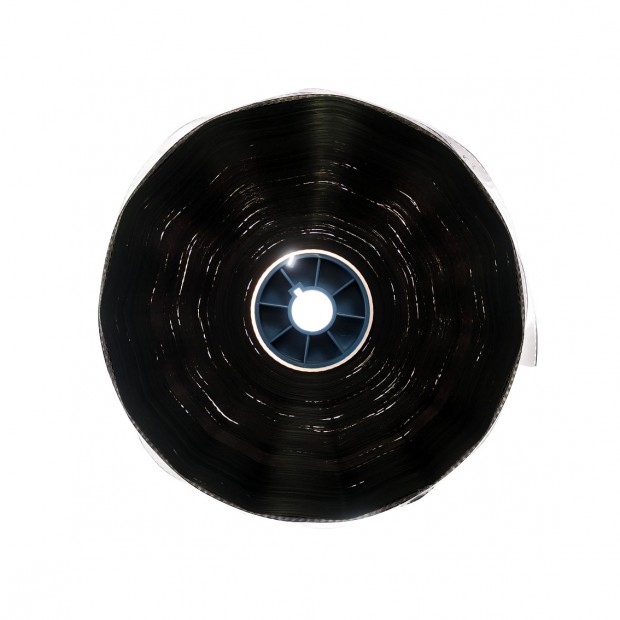



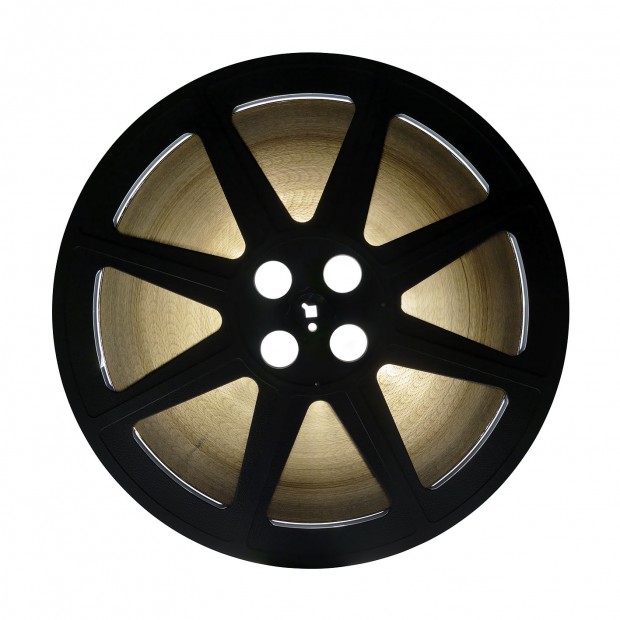

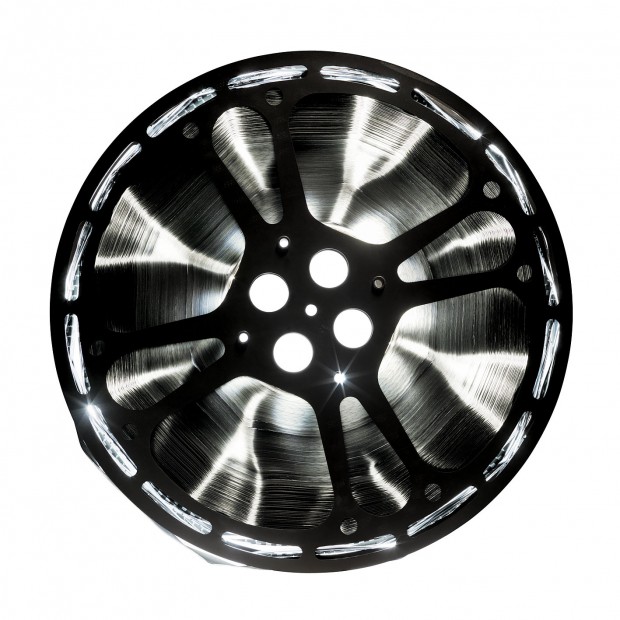

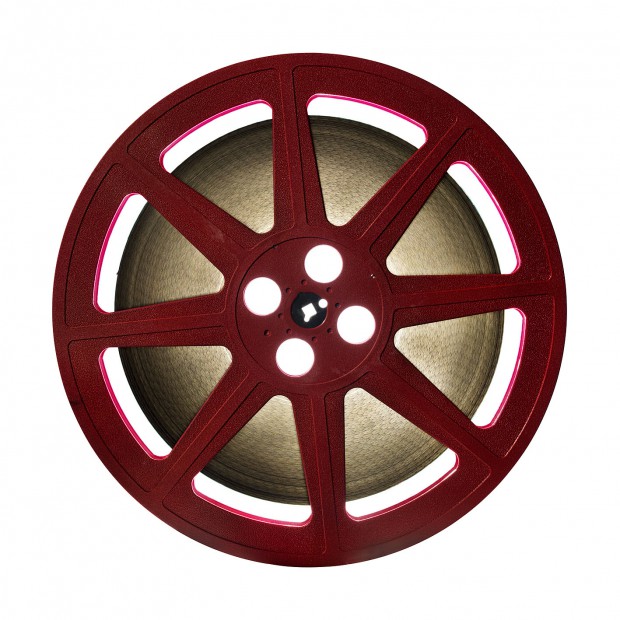



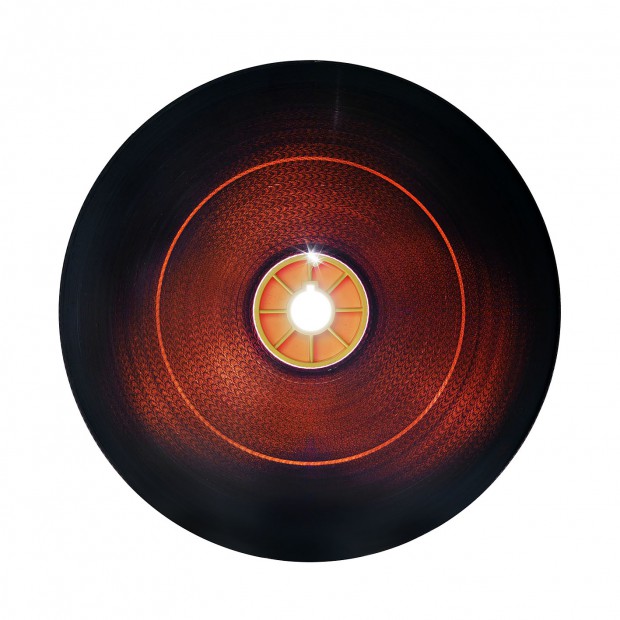

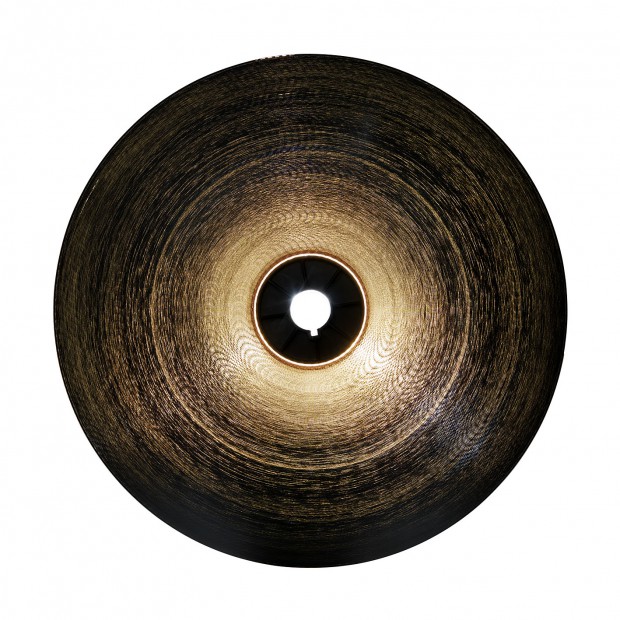



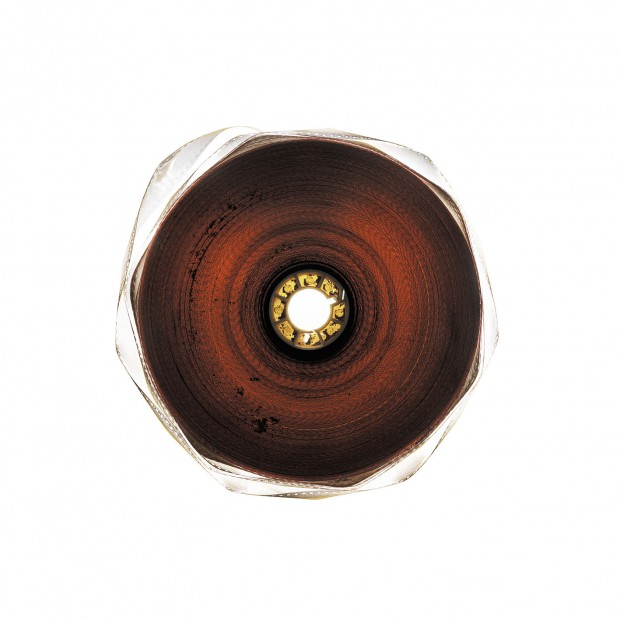

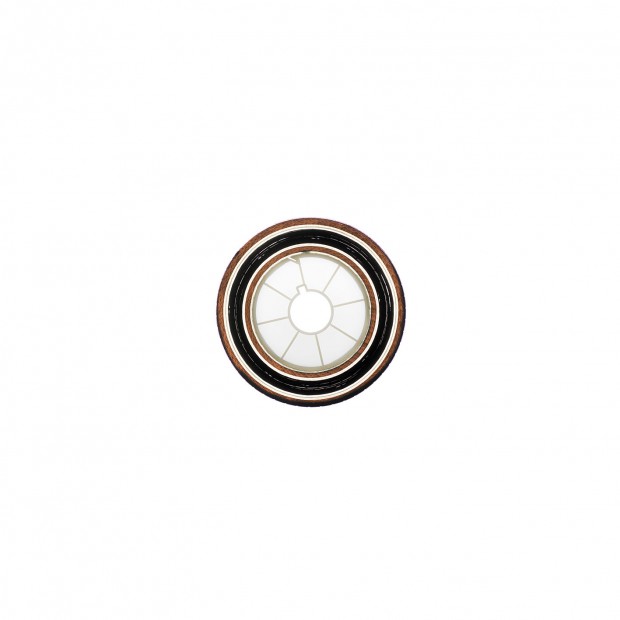

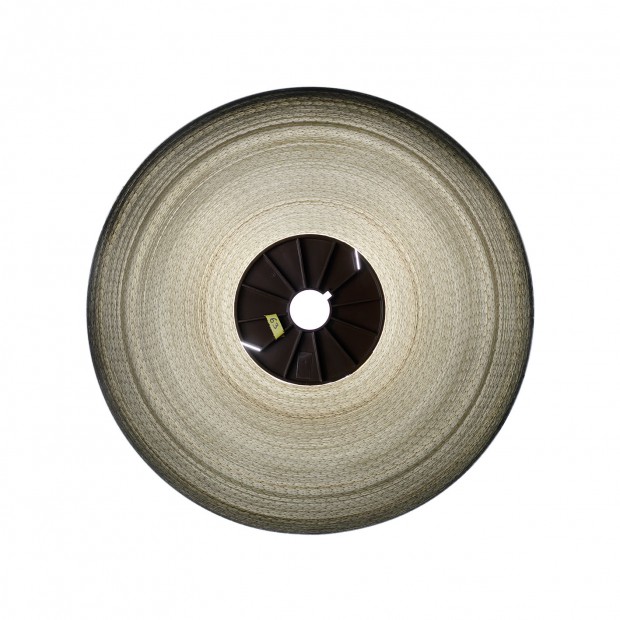

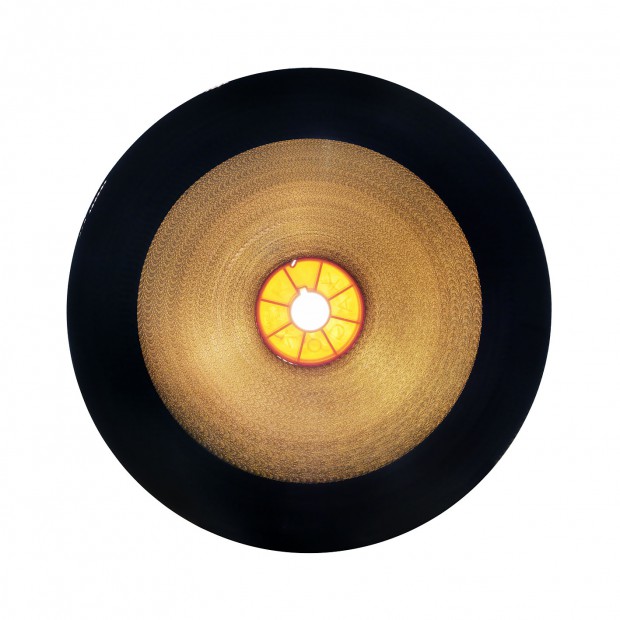

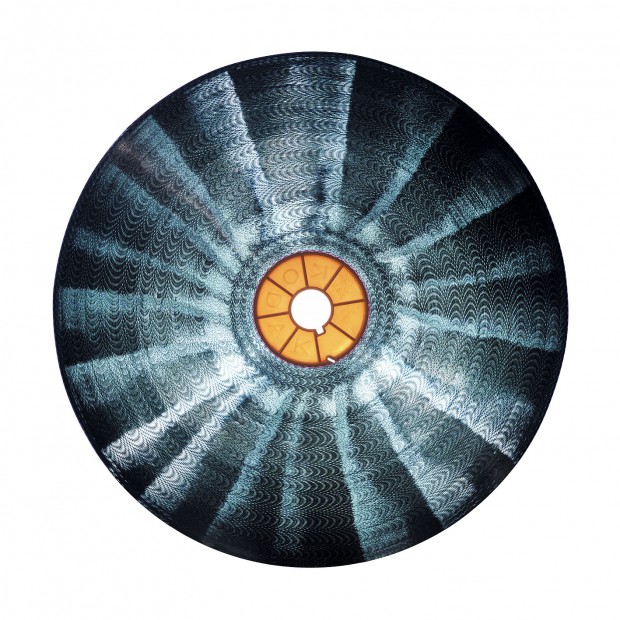

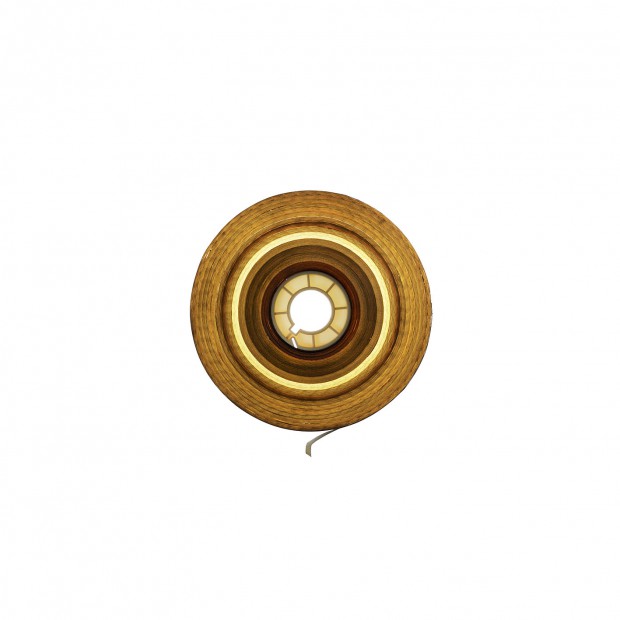

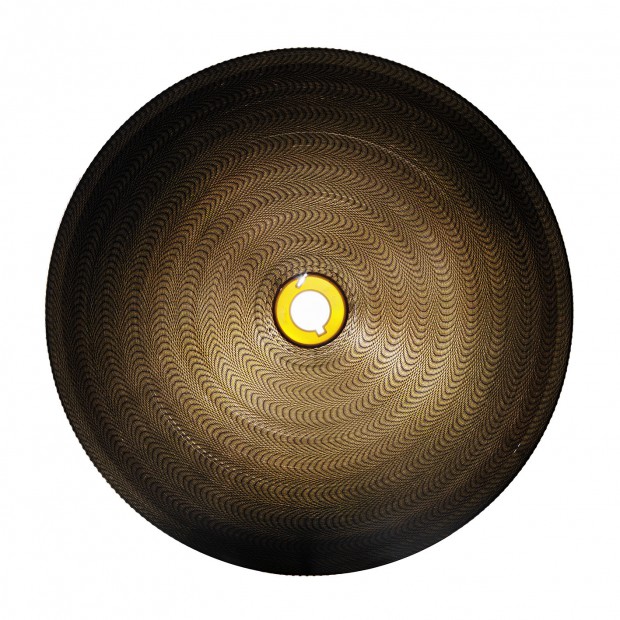

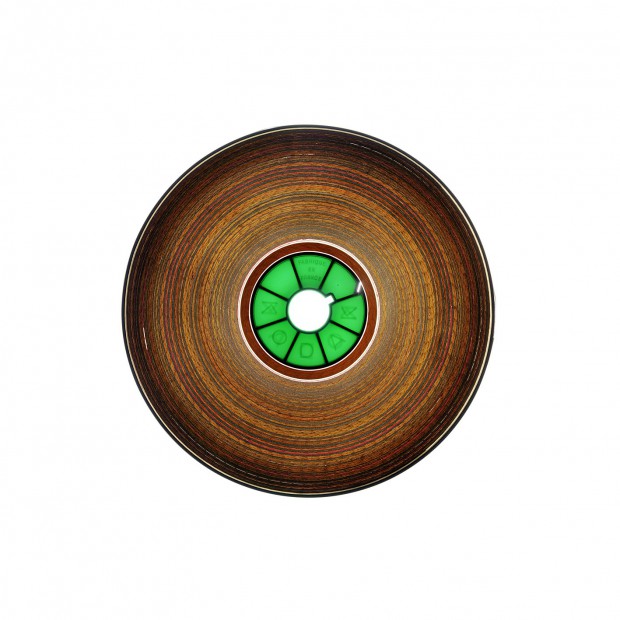

The Unseen Seen. The Discovery of the Film Reel Portrait
Reiner Riedler
Eröffnung: Freitag, 9. Mai 2014, 6-10 Uhr, Gallery Weekend im Kontorhausviertel, Hamburg.
Ausstellungsdauer: 10. Mai bis 19. Juli 2014
Eine der ältesten Gattungen in der bildenden Kunst, die niemals an Aktualität verloren hat, ist das „Porträt“. Der Wiener Fotograf Reiner Riedler führt uns einen interessanten Fall vor Augen. Es geht um Porträts von uns allen bekannten Filmen wie „Casablanca“ von Michael Curtiz (1942), „Der blaue Engel“ von Josef Sternberg (1929), „Ginger e Fred“ von Federico Fellini(1986) etc. Allerdings ist nicht eine signifikante Szene ausgesucht oder etwa mehrere Szenen kompiliert worden, sondern die jeweilige Filmrolle in ihrer Materialität an sich abgebildet.
Wir habe leuchtende, häufig vielfarbige Scheiben vor Augen, mit gestrichelten oder gekörnten kreisförmigen fragilen Linien, die auf ein Inneres zulaufen, das in der Mitte wie durch eine Linse Licht ungehindert durchdringen lässt. Es ist die teils auffällige Ähnlichkeit mit der Iris eines Auges, dass die Darstellung personalisiert, mystifiziert, mit einer eigenartigen Lebendigkeit durchdrungen zeigt. Diese nimmt umsomehr zu, als man die Titel der Filme auf sich wirken lässt. Der kühle bläuliche Schimmer von „See it now: A Conversation with J. Robert Oppenheimer“ von Don Hewitt (1955) lässt vor unserem inneren Auge das Bild Marlene Dietrichs aufscheinen, mit der diese Konversation geführt wurde. Das gleißende Hellgelb der „Alice im Wunderland“ (1951), das im Kontrast zu einem verschatteten dunklen Ring und Verstrebungen steht, erinnert an die zauber- und märchenhafte Mystik dieses Films. Das Schwarz des „Nosferatu“ (1922) nimmt das Grauen und die Nacht im Film von Friedrich Wilhelm Murnau auf, das warmgoldene Beige, Grün, Rot und die gröberen schnurartigen Linien von „Fitzcarraldo“ (1982) lässt an den Urwald im Film von Werner Herzog denken. Diese eigenartig individuelle Ästhetik, die mit Charakteristika der jeweiligen Filme übereinzustimmen scheint, entstand als Reiner Riedler die Filmrollen gleichermaßen mit weissem Licht hinterleuchtete und dann abfotografierte. Die Porträts scheinen eine eigene Seele zu haben, der Fotograf machte das Unsichtbare sichtbar.
Das Projekt ist in Zusammenarbeit mit dem Filmarchivar Volker Ernst entstanden und die Filme stammen allesamt aus dem Archiv der Deutschen Kinemathek in Berlin. Ein Grundgedanke war der, der vermutlich das Porträt überhaupt hat entstehen lassen, dass nämlich der Vergänglichkeit der Sammlungsgegenstände entgegengearbeitet werden und zu ihrem Gedächtnis beigetragen werden kann. Denn das Filmmaterial, zumeist Zelluloid oder Celluloseacetat, wobei ersteres zudem leicht entflammbar ist und nur in gekühlten Räumen aufbewahrt werden kann, löst sich bedingt durch den Alterungsprozess langsam auf.
Zur Ausstellung ist ein Katalog erschienen. Bis zum 27. April war die Serie in der Deutschen Kinemathek. Museum für Film und Fernsehen in Berlin zu sehen. Siehe auch: http://www.deutsche-kinemathek.de/de/ausstellungen/2014/the-unseen-seen
///////////
Opening reception in the presence of the artist: Friday, May 9, 2014, 6-10 pm Gallery Weekend in the Kontorhaus district, Hamburg.
Duration of the exhibition: May 10 to June 21, 2014
The portrait is one of the traditional genres in the history of art, which has never lost its pertinence. The Viennese photographer Reiner Riedler confronts us with a very intriguing type of portrait. He presents to us portraits pertaining to popular movies that all of us are familiar with, such as Michael Curtiz’s Casablanca (1942), Josef Sternberg’s The Blue Angel (1930), and Federico Fellini’s Ginger and Fred (1986). However, the artist has not chosen a significant frame or created a compilation of various scenes, but has rather depicted the film reels of the movies in question in their materiality as such.
We thus see luminous, often multi-colored discs with hatched or grainy, fragile, circular lines that proceed to an inner zone through the midst of which light can freely enter as through an ocular lens. The partially striking similarity to an eye’s iris personalizes, mystifies, and imbues the representation with a peculiar aliveness. The latter effect is still enhanced in view of the titles of the films. The cool bluish shimmer of Don Hewitt’s See it now: A Conversation with J. Robert Oppenheimer (1955) evokes before our inner eye the image of Marlene Dietrich, with whom this conversation was conducted. The bright yellow of Alice in Wonderland (1951), which forms a contrast to a dark, shadowed ring and bars, recalls the magical, fairytale mysticism of this film. The blackness rendered in the case of Nosferatu takes up the horror and the nocturnal darkness in the film of Friedrich Wilhelm Murnau (1922). The warm, golden beige, green, and red as well as the coarser, cord-like lines of Fitzcarraldo (1982) are reminiscent of the jungle in Werner Herzog’s famous movie. The strangely individual aesthetic that seems to correspond so closely to the characteristics of the given films, is a result of Reiner Riedler’s technique of backlighting the film reels with white light before photographing them. The portraits appear to have a soul of their own; the photographer has rendered the invisible visible.
The project was realized in collaboration with the film archivist Volker Ernst. All of the depicted film reels stem from the archives of the Deutsche Kinemathek in Berlin. One of the central concepts it conveys, in which presumably the emergence of the portrait as such is also rooted, is the notion that one might counter the transience of the collected films and keep their memory alive. The film material, which often consists of celluloid or cellulose acetate, the former of which is also easily inflammable and can only be stored in cool places, slowly dissolves in the process of aging.
A catalogue has been published in conjunction with the exhibition. Till April 27 the Serie has been shown in Deutschen Kinemathek. Museum für Film und Fernsehen in Berlin. See also: http://www.deutsche-kinemathek.de/de/ausstellungen/2014/the-unseen-seen
